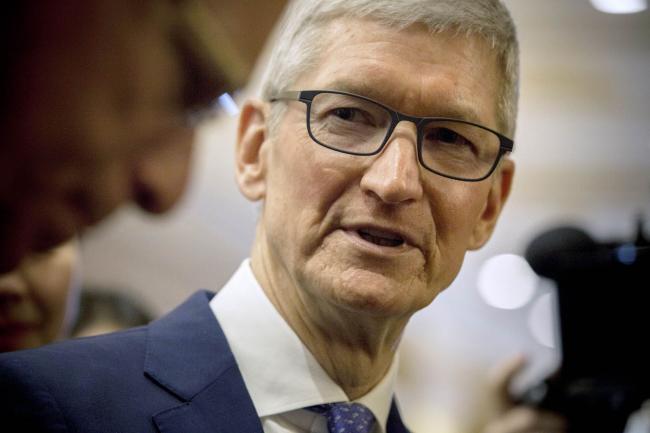(Bloomberg) -- Apple Inc (NASDAQ:AAPL). issued a wider-than-usual sales forecast to reflect what Chief Executive Officer Tim Cook called “uncertainty” caused by a virus outbreak that’s cutting retail traffic, shutting stores and prompting the company to limit employee travel in China, one of its most important markets.
The company is also taking steps to make up for production shortages, particularly in Wuhan, the central Chinese city where the coronavirus originated and home to some of the company’s suppliers, Cook said on a conference call discussing recent results. Sales in the current period will be $63 billion to $67 billion. While that’s higher than analysts predicted, it’s also a wider range than the company tends to forecast.
“We do have some suppliers in the Wuhan area. All of the suppliers there are alternate sources and we’re obviously working on mitigation plans to make up any expected production loss,” Cook said. “We factored our best thinking in the guidance that we provided you. With respect to supply sources that are outside the Wuhan area, the impact is less clear at this time.”
The CEO has led Apple (NASDAQ:AAPL) to a remarkable comeback in the past year, reviving iPhone sales, dodging the worst of a U.S.-China trade war and creating a new gadget hit with AirPods. The company’s holiday-quarter revenue surpassed Wall Street expectations, with double-digit percentage sales growth from iPhones, wearables and services in mainland China.
Read more: Apple (NASDAQ:AAPL) Supply Chain Braces for Disruption From Coronavirus
However, the deadly, spreading coronavirus is a new challenge for the company, which has most of its hardware made in China. Discussion of the virus was one of the few dour notes during an otherwise upbeat earnings call with analysts on Tuesday. Authorities have placed strict limits on travel, and airlines are suspending flights to China, taking a toll on businesses across the region. Almost 6,000 people have been infected in mainland China, and at least 132 have died.
“For now, supply chains for smartphones seem OK, but that can change in a flash,” said Neil Mawston, executive director of the global wireless practice at Strategy Analytics. “If any lockdown spreads and extends well into February or even March, then supply chains could start to get tight.”
For more on Apple (NASDAQ:AAPL) results, click here for our TOPLive blog.
Smartphone factories typically hold two to eight weeks of component or device inventory, so there will be some buffer, at least in the short-term, he added.
After an extended Chinese Lunar New Year Holiday, Cook said factories are reopening on Feb. 10, rather than at the end of January. Apple (NASDAQ:AAPL) has tried to account for this “delayed start up” through its wider sales forecast, the CEO said. On Wednesday, main iPhone assembler Foxconn Technology Group confirmed all of its facilities will resume full-scale production starting Feb. 10.
Beyond potential production disruptions, the outbreak threatens to dampen sales in its largest market outside of the U.S. just as iPhone shipments globally are bouncing back. Apple (NASDAQ:AAPL) has closed one retail store in China and some that are still open have reduced operating hours. The company is “deep cleaning” stores and has begun checking employees’ temperatures, Cook said. Last week, it also began limiting employee travel in affected areas to business-critical situations, he added.
Revenue from greater China, which includes Taiwan and Hong Kong, climbed about 3% to $13.6 billion in the holiday quarter. The company ended the year ranked fourth among smartphone makers in the mainland overall, up one notch after reversing a decline in market share, according to research firm Canalys.
“Given the industry is heading full speed to displace 4G with 5G phones, consumers are likely to pause phone replacement to future-proof devices,” said Nicole Peng, Canalys’ vice president of mobility. “The iPhone 11 series is bucking the trend and was the best-selling 4G device in the China market.”
(Updates with Foxconn’s statement in the eighth paragraph)
